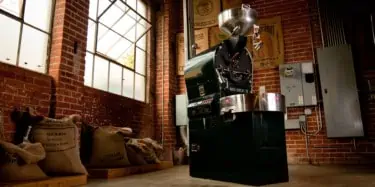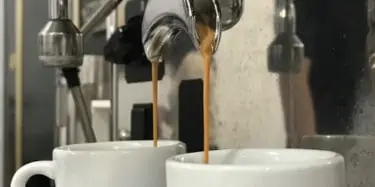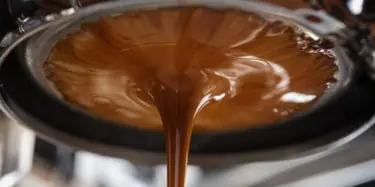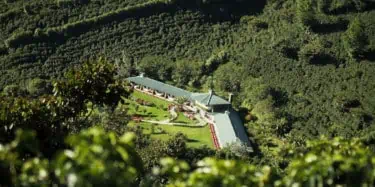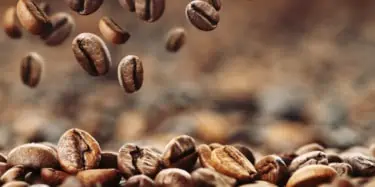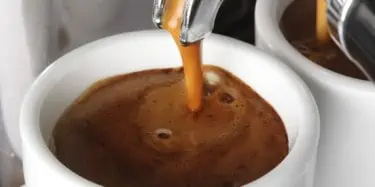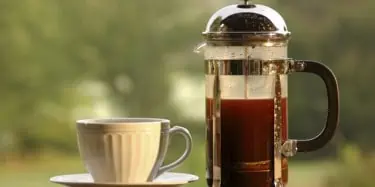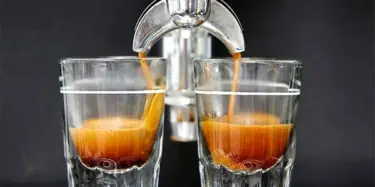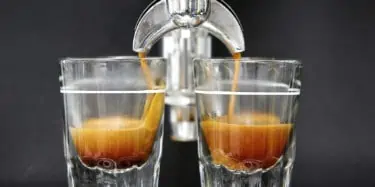The idea of the coffee blend is a long and winding road. Blends give roasters an opportunity to create a coffee that evokes specific sensory properties, and blends are often designed to give consumers a consistent experience over time (much like a Champagne house approaches the non-vintage brut). But before consumers began insisting upon knowing the origins of what’s in their cup, it wasn’t all
Tasting Reports – Blends
Coffee Review has published more than 250 monthly coffee and espresso tasting reports since 1997. The tasting reports below -- featuring coffees and espressos that are a blend of coffees -- appear in reverse chronological order. You may refine your search by using the key word search feature that appears in the page header. The content in tasting reports and associated reviews was correct at the time of publication but may not remain accurate over time.
Exploring “Classic” Espresso Blends: Taiwan Roasters
When we put out our call for classic espresso blends for our June 2019 report, we were not prepared for the overwhelming response: We received 54 samples from roasters based in North America and 46 from roasters based in Asia, all in Taiwan. The magnitude of the response was, perhaps, due to our openness. We had decided not to be prescriptive about what constitutes "classic," but to let roasters
Exploring “Classic” Espresso Blends: North American Roasters
Once a year, we ask roasters to submit coffees roasted for espresso for a special tasting with an outside lab partner, always focused around a specific theme. In recent years, we've covered natural-process and single-origin espresso from the Americas; in 2015, we reported on "open-source" espresso blends, documenting the growing trend of openly revealing blend components to consumers, rather than
Blending Coffees: Craft, Intuition and Thematic Riffs
Blending any two or more things together is a curious and complex act. In winemaking, grapes are often blended to combine extremes in character while simultaneously softening each. Foods may be blended for contrast: Lemon and butter combined, for example, make a classic sauce for pasta or fish that is both richly creamy and tart, a flavor profile that a single food can’t provide. Coffee is an
Blends 2015: Quietly Agreeable with Some Fireworks
Blends (particularly those designed for regular brewed coffee) have been out of fashion at the top end of in American specialty coffee for some time now – say for the last ten to fifteen years. The excitement has been focused on “single-origin” coffees, meaning coffees from a single growing region (the broadest definition), or (a more rigorous definition) from a single farm or co-op, or (most
Open Source Espresso Blends
With this espresso tasting we focus on what appears to be a new trend in espresso blending – the open disclosure to customer and competitor of the identity of the specific green coffees that compose a blend, as opposed to the deliberate secrecy around blending that has prevailed in the coffee industry for decades. The old approach to blending implied secret mastery of arcane coffee knowledge that
Holiday Gift Coffees: Blends and Beyond
This holiday season may mark the definitive return of the blend to the high-end specialty coffee scene after years of almost exclusive dedication to ever-more-refined single-origin offerings. The excitement and ingenuity of many of the holiday-themed blends we sampled this past month certainly suggest such a revival. The holiday blend, a long-standing staple of the specialty coffee business in the
State of the Blend 2014
To say that blends are out of style (at least for drip and French press brewing) in the contemporary high-end world of specialty coffee would be an understatement. Today one seldom sees blends intended for drip brewing featured by cafes and roasting companies with serious upscale coffee aspirations. And any drip blend that does show up is lost among the exotic crowds of direct-trade, micro-lot,
Holiday Blends and Gift Coffees
This month’s reviews fall neatly into two categories: first, five exceptional holiday blends; second, an assortment of fine single-origin coffees offered only for the holidays that range from versions of familiar names to three holiday splurge coffees likely to satisfy money-is-no-object gift-giving and holiday impulsiveness. Starting with the holiday blends, the most striking finding of this
Tall-Drink Espressos: Best Blends for Big Milk
One old-time coffee generalization certainly got shot down by this month’s reviews: the notion that the way to get pronounced espresso flavor in large (i.e. caffè latte-sized) volumes of hot milk is to roast the hell out of the coffees. The idea used to be that the burned pungency of darker roasted coffees would cut through the sweetening, muffling impact of the milk better than medium roasts,
Pity the Poor Decaf Drinker: Signature Decaf Blends
I am a positive thinker when it comes to coffee, but this month's sampling of fifty decaffeinated blends from thirty of North America's finest specialty roasters tested my optimism. Almost every month our reviews reveal impressive new coffee possibilities powered in part by a fresh generation of specialty coffee roasters and coffee producers. Typically our monthly surveys turn up multiple samples
Fourteen Covers of a Classic Tune: Mocha Java Blends
Around 1740 Europeans had a rather limited menu of coffees to choose from: Mocha, the world's original commercial coffee from what is now Yemen, and Java, a recent introduction by the Dutch from their colony in the Pacific. Inevitably, these two coffees came together to form the world's first blend. In the years following, other, now more famous, coffees from Latin America began to fill out
American Espresso Blends: Boutique and Bigger
Specialty espresso is currently in the throes of a creative explosion. I think of it as "post-Italian" espresso, a dynamic community of baristas, blender/roasters and motivated aficionados remaking espresso as a global connoisseur's beverage with passionately contested barista competitions, non-traditional brewing innovations, and freshly conceived blend designs. The goal of this month's
House Blends: Comfort Coffee and Beyond
House blend is a slippery term in coffee. It can suggest the straightforward and reliable, as in "house wine," and it can mean something unusual but local, not to be had elsewhere, as in "only at our house." Plus over the last decade it has taken on still another meaning. You find this last definition operative in the mid-market world of Starbucks and similar upscalish supermarket coffees. Here
Holiday Blends and Other Gift Coffees
Creating special blends and offerings for the winter holidays is a long-standing coffee tradition, and, well, a cool retail opportunity for roasters. It's a natural: nights are long, mornings are dark, days are cold, and coffee is a good thing. Coffee roasters tend to meet the winter holiday challenge in several ways. One is crafting special holiday blends, usually going for heavy body and
Breakfast Blends 2006: An American Tradition Goes Cosmopolitan
What is a "breakfast blend"? The word and the idea come from a seemingly long-gone era in America when pancakes, diners and endless refills were the norm rather than quaintly retro exceptions. In 2006, what can American specialty coffee consumers expect from the term - and from the coffees? If the twenty-six nominal breakfast blends I sampled this month in collaboration with distinguished
Progressive Crema: Organic and Fair-Trade Espresso Blends
Here are three things you need to understand to fully appreciate the achievement embodied in the exceptional espresso blends reviewed this month: First, the espresso brewing system produces its best results from coffees that are balanced but complex. Typically, it takes a minimum of three different coffees, often as many as five, to produce an espresso blend that is both complete enough and
Premium Coffee Blends
The upside of blending coffees is the possibility of creating a coffee with more range and complexity than can be displayed by a coffee from a single crop or origin. The downside is the potential loss of idiosyncrasy or distinctiveness, the danger of creating a boring muddle rather than a complex symphony. Although only one of the twelve blends reviewed here struck me as a full-on symphonic
Classic Espresso Blends
In an American context, a classic espresso blend is one that achieves the heavy body and natural sweetness required of espresso brewing by skillful combining of naturally sweet, full-bodied coffees, rather than by trying to subdue acidy coffees through aggressive dark roasting. In these terms, all nine of the blends in this month's espresso tasting can be said to honorably aspire to the
Mocha-Java Blends
Buying Mocha-Java blends is like listening to jazz ensembles cover Autumn Leaves; the melody may be the same but the interpretations sure aren't. Kevin Knox of Allegro Coffee tells a story from the early, pre-corporate days at Starbucks, when the company named its Mocha-Java blend "Revolutionary" Mocha-Java. Revolutionary because people were actually told what was in it. Both the enduring











